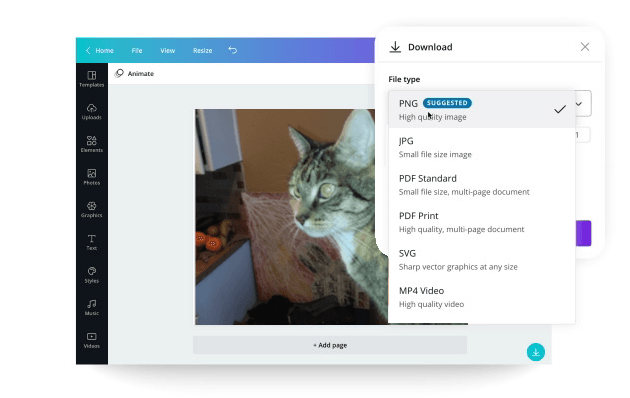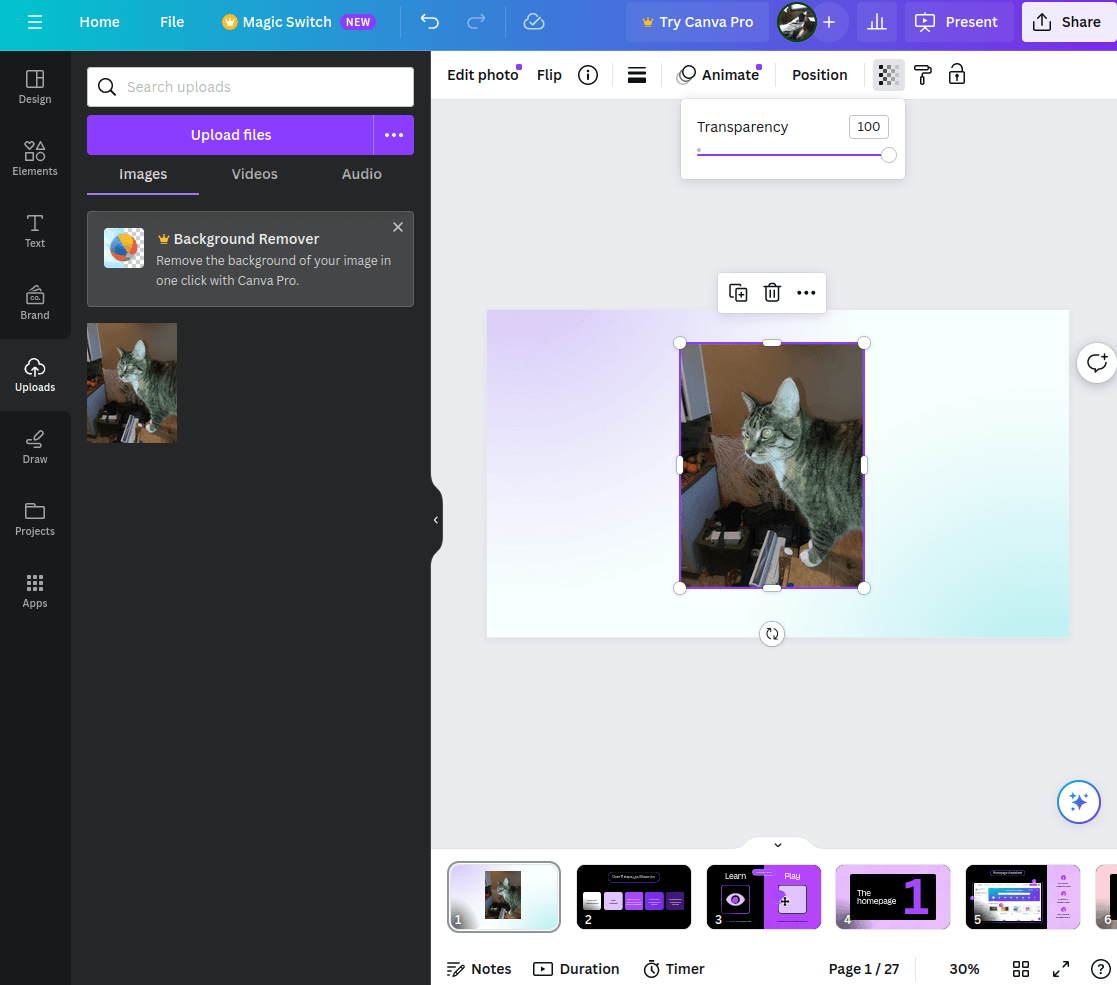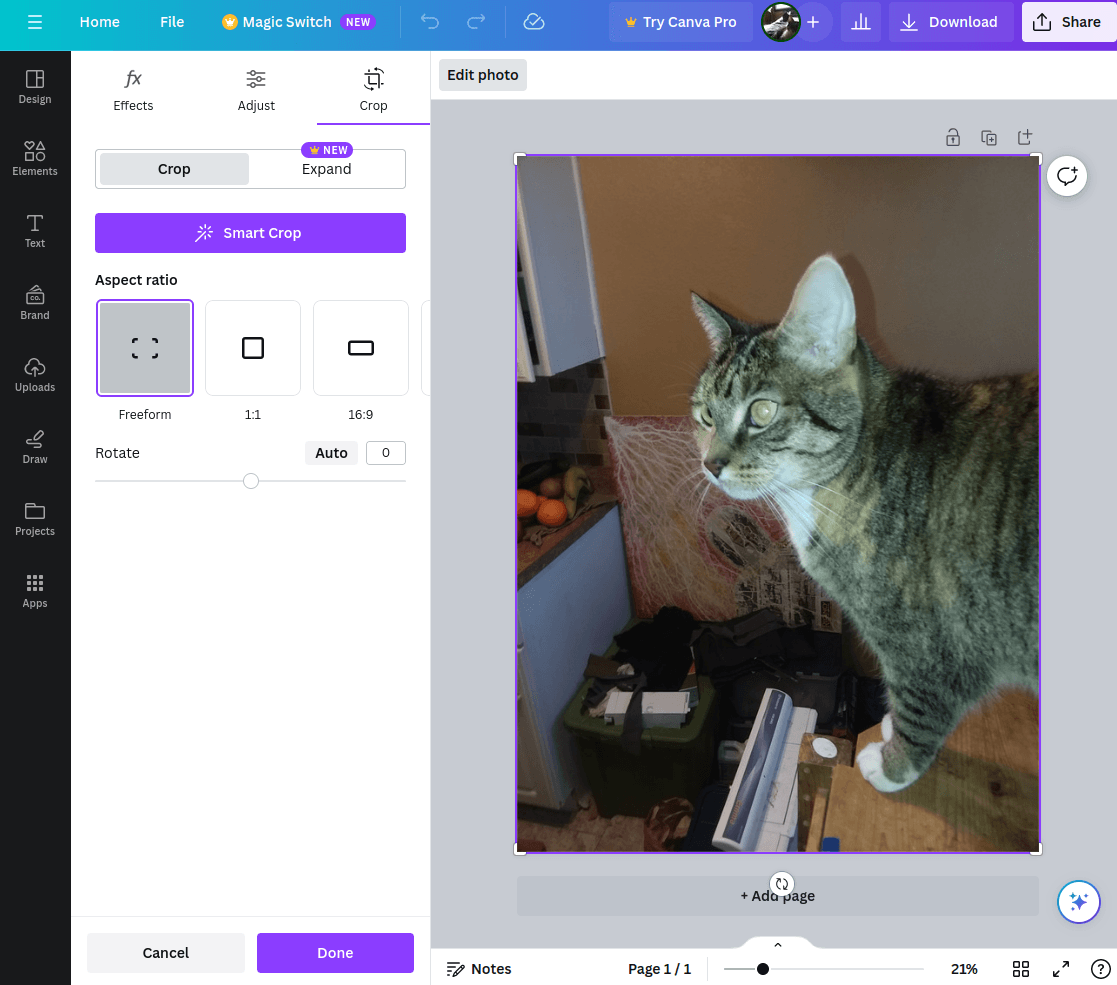Canva is a great tool for creating visual assets. It’s capable of making everything from videos and presentations to social media posts and posters.
Even better, you don’t need much know-how to start designing. You can get started in seconds and design a masterpiece. 🎨
Well, maybe not a masterpiece, but at least something presentable.
What if you’d like your images to look a bit more polished? Canva’s default templates are a good starting point — but they’re not the whole story.
Making your creative work fit your intended audience is key. And using background transparency is one of the best ways to achieve a more professional, appealing look.
Here are some things to know about making a transparent background in Canva.
A Quick Canva Intro
Canva is a graphic design app. It works on mobile, desktop, and the web.
The most basic version of Canva is free. This includes most of the fundamentals that make the app popular, like its drag-and-drop editor.
Canva Free comes with hundreds of thousands of free templates and millions of photos. It supports more than one hundred types of designs, offers cloud storage, and lets you collaborate with others.
Canva also has a couple of premium products: Canva Pro and Canva for Teams. Both of these versions up the number of templates and assets you get. They also include richer features, like AI-powered design tools, branding controls, and more.
If you’re willing to fork over about $120 per year, you can upgrade to Canva Pro. Canva for Teams costs $300 annually. There are also lower-priced options for nonprofits and educational users.
Why does it matter? Well, if you’re using Canva Free, you don’t get the image background removal tool. As we’ll cover, however, there are ways to work around this.
Why Should You Make Your Background Transparent in Canva?
Background transparency plays a huge role in art, presentation, marketing, and design. In artistic terms, this is a matter of negative space — the empty areas around an image’s subject.
Avoid making your designs too cluttered or busy. By leaving room for negative space, you eliminate distractions. This guides your audience toward the things you want them to focus on.
Imagine you were creating a portfolio website to show potential employers. You might want to include a headshot so they could get a look at your friendly face. 😁
Removing the background behind your head — and letting the negative space do its work — could make for a more memorable impression.
This classic designer’s trick doesn’t just apply to images of people. Negative space helps everything from product photos to logos stand out.
Making backgrounds transparent can also help you reinforce dominant color schemes, promote thematic design elements, and maintain consistent branding.
There’s another important reason to use background transparency.
Suppose you were building a design from multiple images, like placing a logo on a T-shirt. You’d probably want to eliminate the backgrounds from each image. Otherwise, the ones on top would hide those below!
How to Make a Background Transparent in Canva
There are a few ways to make a background transparent in Canva depending on what you’re doing. All of the instructions for Canva Pro also apply to Canva for Teams, Canva for Nonprofits, and Canva for Education.
Making a Transparent Background While Downloading Images From Canva Pro
This step is as essential as upscaling your image, but many people somehow forget it. If you’re frustrated and wondering why your saved images aren’t transparent, this tip is for you. 👀
In Canva Pro, there are two steps to remember: Choosing the right file format and enabling transparency.
1. Pick a Download Format That Supports Transparency
Not every image format supports background transparency. Even if you’ve created a document with a transparent background, you’ll need to choose the right output format to preserve it. If you don’t, you’ll see a filled-in background when you try to use the image elsewhere.
In Canva, this means picking PNG (Portable Network Graphics)!
PNG is a type of raster format, meaning it stores data as colored dots called pixels. The PNG format also reduces file size (by using compression) without sacrificing image quality (it’s lossless).

2. Enable Transparent Backgrounds
This second step is crucial. Just because PNG files can support transparent backgrounds doesn’t mean they have to. You have to enable the feature.

PNG files that include transparency data are slightly larger. In most cases, the difference isn’t that noticeable.
When should you care about image size? It’s wise to keep in mind if you’re working with lots of files or layers. In that case, you can click the compression option to help reduce the final output size.
Troubleshooting tip: Remember that Canva Free doesn’t support downloading with a transparent background. Are you using a paid version?
Making a Transparent Background With Canva Pro and an Existing Image
Next, we’ll tackle the nice and easy way. You can make backgrounds transparent using the one-click tool.
Now import an image into Canva and tap/click on it. You should see some new options at the top of the screen.
Next, look for the checkerboard icon. If you click it, you’ll see a slider that lets you pick a transparency value.

This only works with compatible images. In other words, you need to be sure the images you add to your project are PNG files with transparency support. If it doesn’t work, check the file before importing it!
How to Make a Transparent Background With the Background Remover
What if you’re dealing with images that don’t have transparency? For instance, you might have imported a video frame with a greenscreen background.
Lucky for you, Canva Pro has a tool to help: the Background Remover.
The background remover tool tries to automatically select and delete the background from your image. After picking an image, choose “Background Remover” under the effects menu, and you’re all set.
…Or at least that’s how it should be. In reality, you may run into problems getting this tool to work. This can happen when:
- You’re dealing with a huge image file
- Your internet connection is slow — this tool uses remote servers to do its job
- You’re using a Chrome web browser — some users suggest switching to Firefox or using an older Canva version
- Your source image is of low quality and needs enhancement
What should you do if you can’t secure a better internet connection, find a higher-quality source image, or switch browsers? Editing your images before removing the background may help.
One thing to try is to cut large images down to size, removing non-essential bits. This can also make it easier to compose projects with multiple images.

After opening an image in Canva, pick the crop tool. Select the part of your image you want to keep. Then apply the changes before trying the background remover again.
Making a Transparent Logo Background in Canva
Another option is to work with vector images. These are images that store designs as shapes — instead of the pixels found in raster images like PNG or JPG photographs.
Vector image format files automatically support transparency. This is because they’re only storing data about the places you’ve filled in. You’ll commonly find these formats used in logos and other designs that might require lossless resizing or scaling.
On the web, SVG (Scalable Vector Graphics) is the most common vector image format.
In Canva, you can use the SVG editor to take advantage of this. In most cases, you’ll start from a source image — like a piece of clip art or a logo — by importing your SVG file.
You can also build from the ground up, but there’s a major catch: The Canva SVG editor isn’t a full-featured vector editor!
Canva only lets you make some changes to SVGs. For example, you can recolor, crop, rotate, or reposition a vector image. You can also add text in your choice of fonts or apply effects.
What you can’t do is edit the lines that make up your shapes. For this, it’s better to use an external tool — like Imagewith.AI’s outcut, Inkscape, or Adobe Illustrator — before you try to import the SVG to your Canva project.
Cleaning up Backgrounds With the Canva Magic Eraser
Another way to remove objects from photos is to use the Magic Eraser tool.
Canva’s Magic Eraser is an AI-powered effect. It tries to identify objects and replace them with natural background imagery.
This is awesome for jobs like removing your drunk-ass auntie from your wedding photos without messing up the vibe. (Sorry auntie.)
That said, the magic eraser tool won’t remove the entire background of an image.
What it can do, however, is simplify the image. And this might be good enough for some designs.
Got an image of people with someone photobombing off to one side? Magic Eraser isn’t a bad choice. It often works well with outdoor shots or photos with blurred backgrounds. Also, remember that there are other great tools for eliminating unwanted objects.
The Easiest Way to Make a Background Transparent Has Nothing to Do With Canva
Canva is great for working in the cloud, staying productive on a mobile device, and collaborating. End of story?
No way.
Despite all its strengths, this app has some fairly large limitations. Like not being able to edit SVGs or export transparent images in Canva Free. Even tools like the background remover kind of fall short — they dumb things down so much that they can be super annoying! 🫠
But don’t worry! You can combine Canva with external tools to make life way easier.
Make Your Background Transparent in Imagewith.AI Outcut
Imagewith.AI’s outcut tool is one of the best options for cleaning up your image editing workflow.
The outcut tool takes the Canva background removal effect to the next level. Best of all, you can use it without paying expensive yearly fees!
To get started, head to the app’s online interface. Upload your image using the button, and in an instant, you’ll see results. +1 for simplicity!
Adjusting Your Transparent Image Background in Imagewith.AI
From here, there are a few interesting features you won’t find in Canva.
The default outcut settings produce a transparent image. But you can also choose different fill colors. It’s easy to replace your background with your stylish hue of choice. 😍
Another huge difference? Imagewith.AI doesn’t dumb things down!
With tools like Canva, your editing workflow is a total crapshoot. You just have to accept whatever you get — or keep trying for a better result. Frustrating!
The Imagewith.AI outcut dashboard actually shows you what’s happening behind the scenes. For a front-row seat, click the “Edit” button.
From here, you can use the brush tool to select the areas you want to keep (Restore mode). You can also adjust the selection (Erase mode). For the fine details, just change the brush size.
Once you’re done, choose “Apply” to save your work. Then, download the file as a PNG — it couldn’t be easier.
Final Thoughts
There are plenty of ways to edit, compose, and share images. Although Canva is an awesome choice, it can’t do it all. Other tools are way better for tasks like sharpening and denoising your images.
Knowing which medium and tool to work with is an essential part of effective visual storytelling. Even if you prefer Canva for quick layouts, it’s important to understand its strengths and weaknesses.
Saving yourself time and stress leaves you with more freedom for creativity. Why not make your life easier?
Prepare your transparent image backgrounds using Imagewith.AI Outcut — you’ll definitely notice your Canva efficiency improving! 🚀






